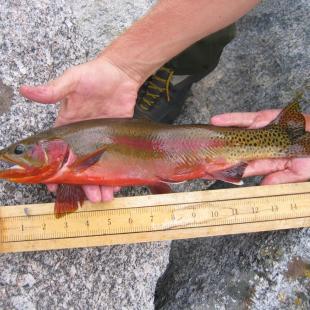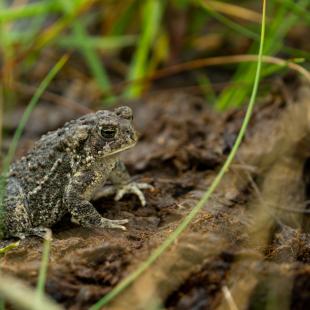In Wyoming, the burrowing owl is a species of greatest conservation need. Burrowing owls are extremely reliant on habitat that also overlaps some with prairie dogs. These innovative owls use the underground tunnel systems already established or abandoned by prairie dogs or ground squirrels to make their nest in and raise their young.

Burrowing Owl Reproduction
Female burrowing owls lay 6-12 eggs on average. Their eggs are about 1.25 inches long and white in color. They typically incubate for 28 to 30 days. Burrowing owl nests are found underground, usually at the end of a burrow. After the chicks hatch they are helpless and have their eyes closed, staying close to the nest for 6-7 weeks. At around 2 weeks of age the owlets can stand up and move around the nesting area.

Conservation Management Efforts
As a species of greatest conservation need, managers are actively working to research and monitor burrowing owls in Wyoming. There are two ongoing survey programs that help monitor this species. Wyoming Game and Fish Department has also implemented additional species specific surveys for burrowing owls.
Habitat
Burrowing owls inhabit areas of Wyoming that are relatively open with sparse vegetation. They can typically be seen on the prairie or desert-like steppe land. Burrowing owl habitat also overlaps some with prairie dogs, in which they use their burrows for nesting.
Behavior
Burrowing owls spend the majority of their time on the ground or on low-lying perches. They are both diurnal and nocturnal, meaning they are active during the day and night. They will also spend time foraging at dawn and dusk. Since they live in open grassland or desert-like areas, the burrowing owl can sometimes be spotted taking a dust bath in the dirt, which helps to rid their feathers of mites.
Adaptations
The burrowing owl is a cryptic species. Their brown and white spotted coloration provides a source of camouflage so they can effectively blend in with the ground. Burrowing owls are also long-legged which enables them to easily hunt and obtain their prey either on the ground or while in the air.










